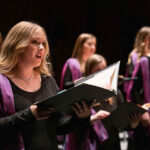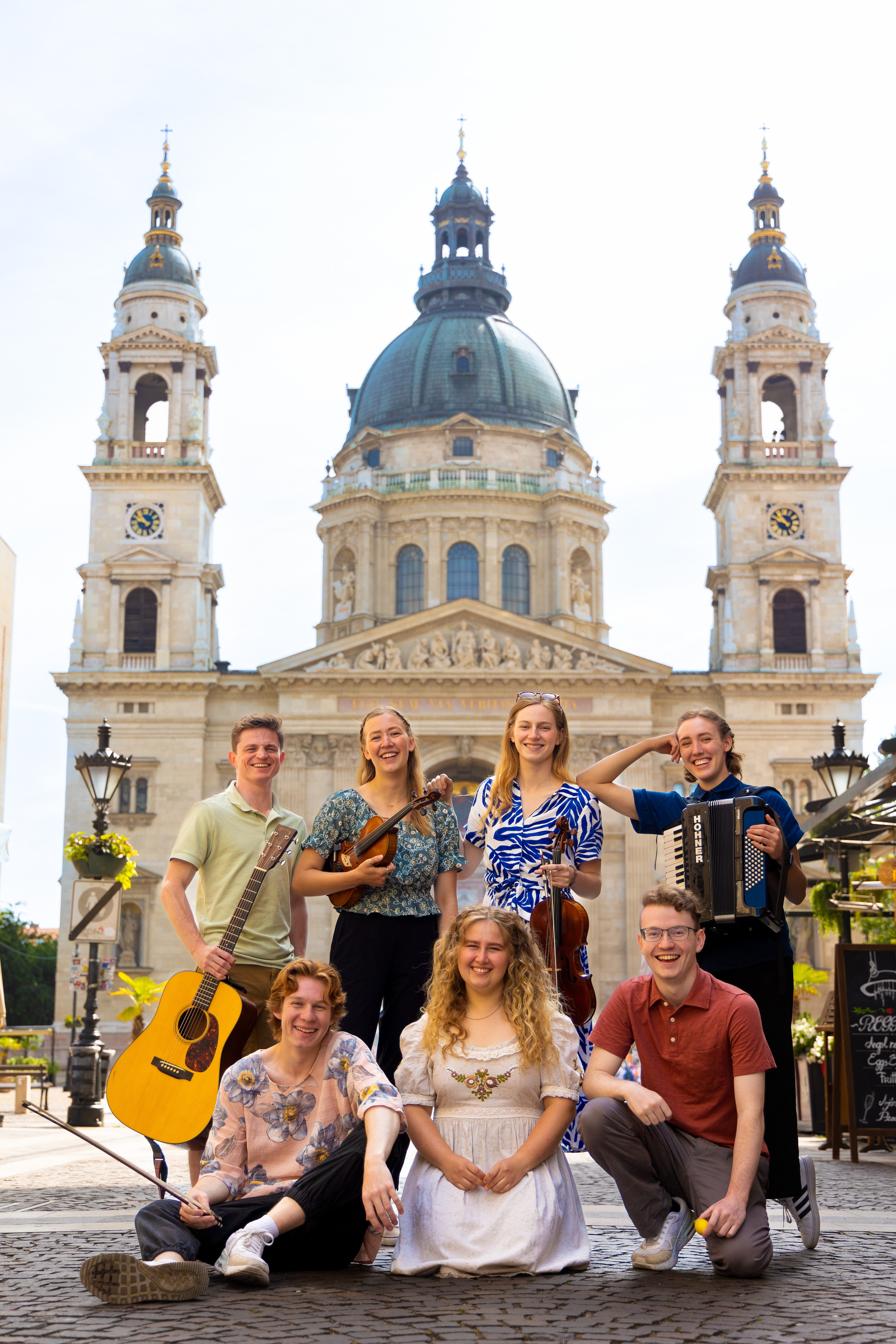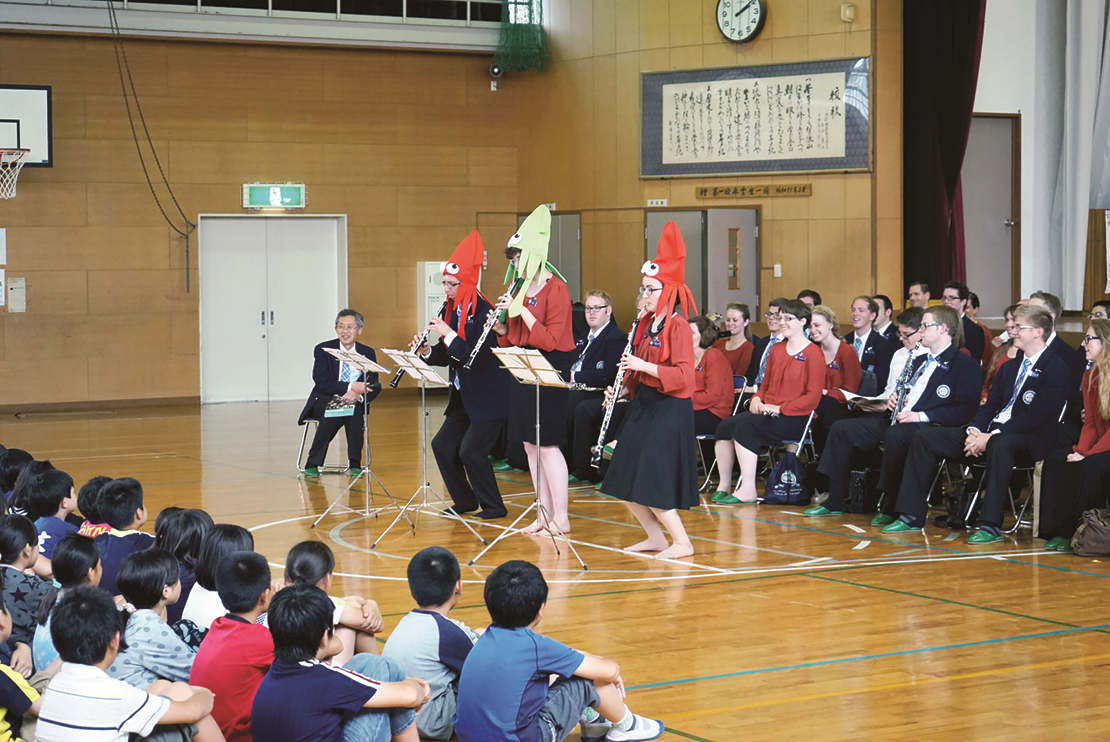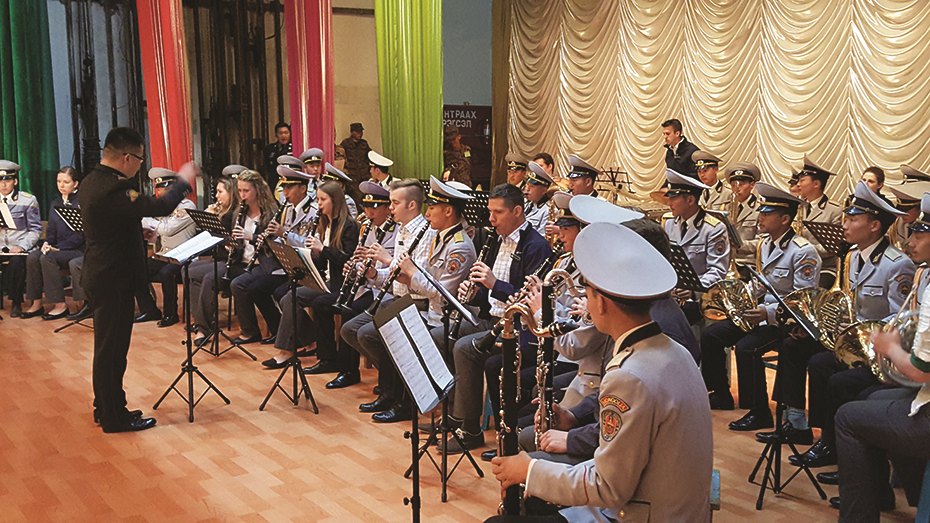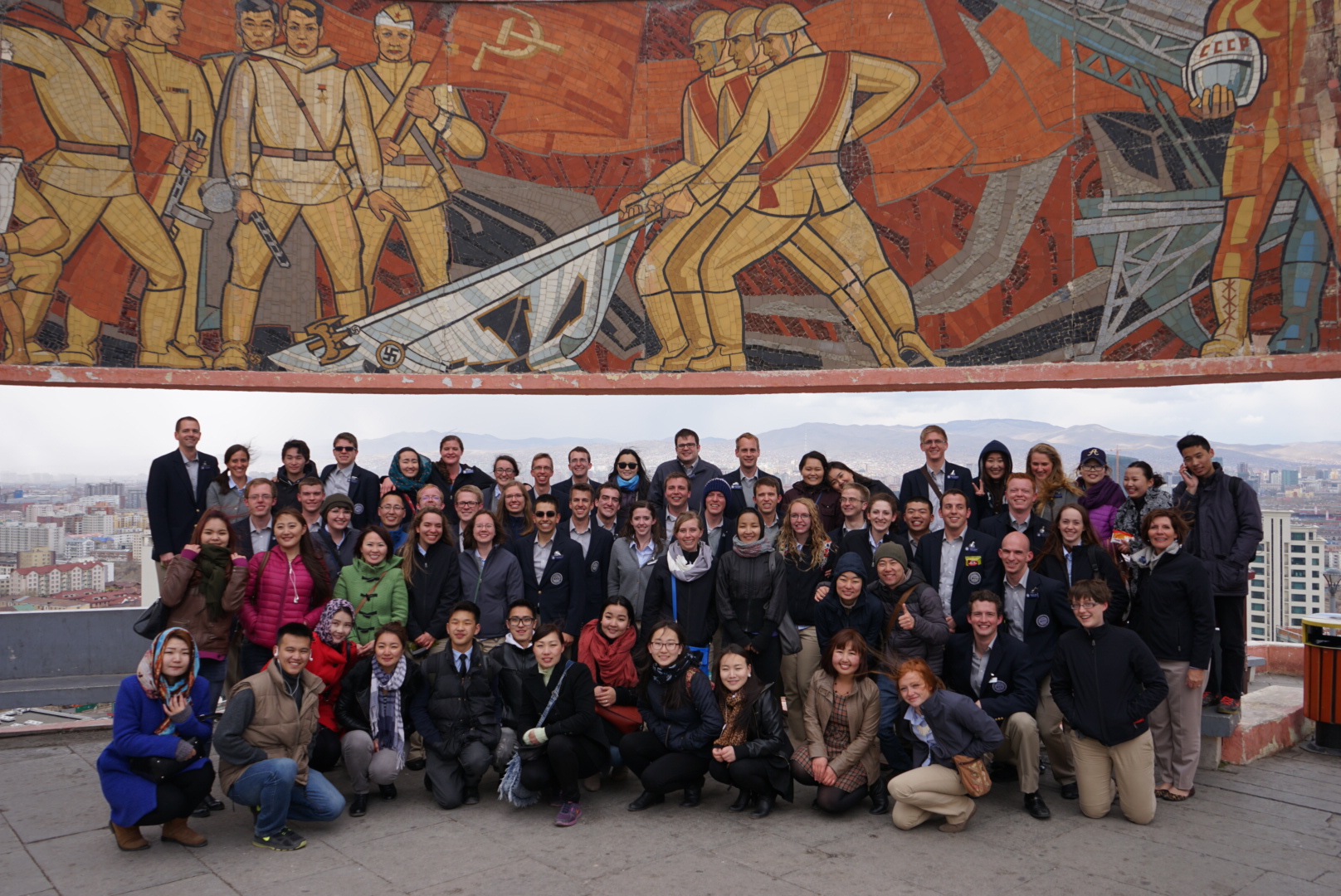
New friends say goodbye after surprising Wind Symphony with a farewell song at Zaisan Memorial in Ulaanbaatar, Mongolia.
Folk songs broke language barriers this summer as BYU Wind Symphony toured in Mongolia, South Korea, and Japan. On tour, band members proved that music continues to transcend differences in culture and language and has the ability to form connections and memories that will last a lifetime.
Traditional Folk Songs
In preparation for its tour, Wind Symphony chose folk songs from each of the host countries to share in their concerts. The chance to perform these cherished songs became a highlight for the students. “The audience would start to clap when they heard the tune of the folk songs,” says trumpeter Logan Anderson. “They were excited to hear how we treated
their music.”The band had the special privilege of performing for the original arrangers of several Mongolian folk songs, who were invited to the concert by a contact in the Mongolian LDS Choir. These Mongolian musicians were emotionally moved by Wind Symphony’s performance.
The folk songs were also well received on the next leg of the tour. “One of my fondest memories of an audience reaction was in Korea,” says flautist Maren Hansen. “We performed an arrangement of ‘Arirang,’ a beloved national song. As I looked into the audience, I remember seeing a few older women listening with their eyes closed, silently mouthing the words to the song. It was touching to see their appreciation of what must have been a less-than-traditional performance of the song.”
Guest Artists
The musicians enjoyed sharing the stage with other artists, including the Mongolian LDS Choir, Busan Wind Orchestra, Eighth U.S. Army Band, and Camarata Chorale.
The Mongolian LDS Choir joined the band for performances of “High on the Mountain Top” and a folk song called “Haluun Elgen Nutag.” In Busan, South Korea, the band worked under director Jin Hyoun Baek and relished the atmosphere created by emcee Robert Holley, a national radio and TV personality. In South Korea the band also performed a concert with the Camarata Chorale celebrating the 60th anniversary of The Church of Jesus Christ of Latter-day Saints in Korea.
School Workshops
In addition to public performances, the ensemble presented two workshops to elementary-school-age children in Japan. The symphony demonstrated with different instruments and performed in small ensembles. They played tunes from famous movies, including some Japanese films. “When we started to play a piece from My Neighbor Totoro, the kids started yelling with excitement,” recalls French horn player Anna Lenhart.
Movie scores made the perfect connection for young children, but at an exchange with the Defense University of Mongolia, the interaction was based in more classical music. The students split up by instrument for workshops in sections. Lenhart joined a group of Mongolian horn players only to realize that there was no translator, so the students could not speak to each other. The horn players from both groups played together anyway. It was not the only time the BYU students found themselves unable to speak to their counterparts at schools or rehearsals. “We couldn’t speak to each other, but we could play an entire concert because that is the way music is,” Lenhart says.
Cultural Connections
The students quickly came to love the generosity that permeated the cultures on tour. Detailed itineraries left little room for surprises on tour, so when the group hiked to the top of Zaisan Hill on a chilly morning to overlook the city of Ulaanbaatar, Mongolia, they were delighted to be the recipients of a surprise farewell. Many members of the local congregation of the Church showed up to sing the hymn “High on the Mountain Top” in Mongolian and to give the students chocolates and keepsakes. Mongolian culture is based in a long history of living on the plains, so when strangers arrive, they are treated like family. “That is what happened for us in Mongolia,” says artist manager Troy Streeter. “We were immediately welcomed as part of the family, and it made leaving our new friends that much harder.”
For the final concert in Japan, Lenhart was part of a small ensemble that performed “A Song for Japan,” written in memory of the 2011 tsunami in Japan. “It is a piece that moves from a lament to a song of hope,” she explains. At the end of the performance, the quintet was approached by Naoko Kawahara, a public affairs contact who worked to bring the band to Japan. Kawahara, whose hometown had been devastated by the tsunami, shared how much she was touched by the performance. The piece was a gesture of respect between two cultures through the universal language of music.


